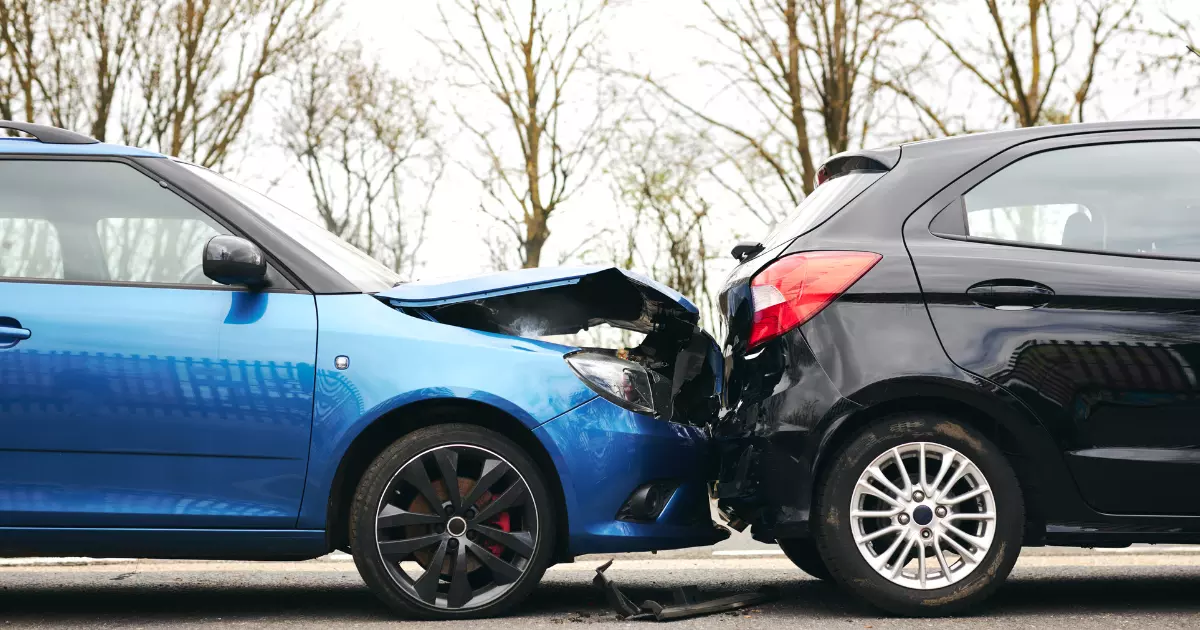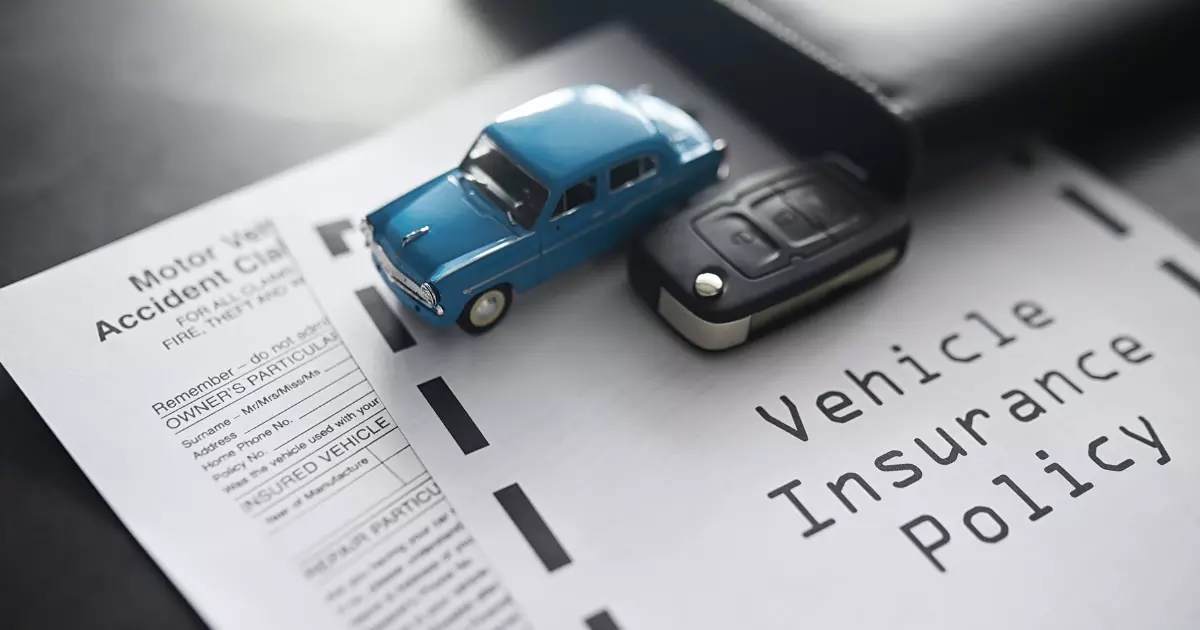Auto Insurance: Essential Information You Should Know
Auto insurance is essential for every vehicle owner. It offers financial protection against accidents, theft, and other unexpected events. Understanding auto insurance helps you choose the right policy. It can also save you money and help you avoid common pitfalls.
In this article, we’ll break down the core aspects of auto insurance. We’ll explain the different types of coverage, such as liability, collision, and comprehensive insurance. You’ll also learn about additional options like uninsured motorist protection. We will explore factors that influence your insurance premiums and share practical tips to lower your costs without sacrificing coverage. With this knowledge, you can make smarter decisions and ensure you’re not left unprotected in the event of an accident. Take control of your auto insurance today—read on to discover everything you need to know!
What is an Auto Insurance?

Auto insurance is a policy that protects drivers financially in case of accidents or theft. It covers the costs of physical damage to your vehicle and other people’s property. It also pays medical expenses resulting from a traffic collision and other incidents involving your vehicle. Auto insurance also shields you from legal liabilities if you’re found at fault. This coverage ensures that you won’t face overwhelming expenses in the event of an accident. You will be able to repair or replace your car and handle any associated costs without significant financial strain. By paying regular premiums, you can mitigate financial risk. You have peace of mind knowing that you’re prepared for unexpected incidents on the road.
Who is Covered by Auto Insurance?
Auto insurance typically covers the policyholder, passengers, and other drivers using your car with permission. Each policy has specific terms defining who is covered and under what circumstances. For instance, if you lend your car to a friend and they get into an accident, your insurance may cover the damages. It also protects family members listed on the policy when they drive your car. Coverage can extend to incidents like borrowing a rental car or even driving someone else’s car with their permission.
What are The Different Types of Auto Insurance?
Auto insurance consists of several types of coverage. Each one offers specific protection. Understanding each type helps you choose the right coverage to protect yourself, your passengers, and your vehicle.
Liability Insurance Coverage
Liability insurance coverage is a fundamental component of auto insurance. It protects you financially if you are responsible for an accident. This coverage is divided into two main parts. Bodily Injury Liability Coverage covers costs associated with injuries or death caused by your car. For example, if you cause an accident that injures another driver, bodily injury liability will cover their medical expenses and lost wages. This protection saves you from out-of-pocket expenses for injuries you cause to others. However, it doesn’t cover your own injuries or those of your passengers. Property Damage Liability Coverage reimburses others for damage caused by your car to their property. For instance, if you accidentally drive into someone’s fence, this coverage will pay for the repairs. It benefits you by covering repair costs for others’ property, but it doesn’t cover damages to your own vehicle.
Collision Coverage
Collision coverage reimburses you for damage from collisions with other vehicles or objects. This coverage includes repairs for your car after an accident, regardless of fault. For instance, if you hit another car or a tree, collision coverage pays for the repairs. It protects your investment in your vehicle, but it often comes with a deductible. Additionally, collision coverage also includes vehicle damage caused by road hazards like potholes. For example, if you damage your car’s suspension by hitting a pothole, collision coverage can help with repair costs.
Comprehensive Coverage
Comprehensive coverage protects against non-collision incidents. This includes theft, fire, flood, vandalism, and natural disasters. For instance, if your car is stolen or damaged by a hailstorm, comprehensive coverage will pay for repairs or replacement. It provides extensive protection from various risks but typically has a higher premium. It also covers rare events like falling objects or even asteroids. This ensures that you are prepared for almost any scenario. Glass coverage specifically addresses damage to your vehicle’s glass components. This includes repairs or replacement of windshields and other windows. For example, if a rock chips your windshield, glass coverage can cover the repair cost. Some policies offer no-deductible glass coverage, so you won’t pay anything out-of-pocket for glass repairs. This is advantageous but may increase your premium.
Medical Payments or Personal Injury Protection (PIP)
Medical Payments or PIP coverage provides reimbursement for medical expenses for you and your passengers. It covers medical costs following an accident, regardless of who is at fault. For instance, if you’re injured in a collision, PIP will pay for your hospital bills. This offers immediate financial relief for medical expenses. PIP also covers lost wages if injuries prevent you from working. For example, if you’re unable to work due to accident-related injuries, PIP can compensate you for lost income. This ensures financial stability during recovery. However, it can come with an additional cost to your policy.
Uninsured/Underinsured Motorist Coverage
Uninsured and underinsured motorist coverage protects you when the other driver lacks sufficient insurance. If you’re hit by a driver without insurance, this coverage steps in to cover medical expenses and damages. This is what the at-fault driver’s insurance would have paid. However, it adds to your policy cost. This coverage also applies to hit-and-run situations where the at-fault driver flees the scene. It ensures you aren’t left covering costs on your own. Additionally, underinsured motorist coverage provides extra protection when the other driver’s insurance is insufficient. For example, if an at-fault driver’s liability limit is too low to cover your damages, underinsured motorist coverage fills the gap.
Read also: Why Do You Need Motorcycle Insurance?
Gap Insurance
Gap insurance is essential for new or leased vehicles. It covers the difference between your car’s actual cash value and the remaining balance on your auto loan if your car is totaled or stolen. For example, if your car is totaled in an accident and the insurance payout is less than what you owe on your loan, gap insurance pays the difference. This ensures you are not left with unpaid debt.
Towing and Labor Coverage
Towing and labor coverage provide assistance if your vehicle breaks down. This includes services like towing, tire changes, and jump-starts. For instance, if your car doesn’t start, towing and labor coverage will cover the cost of a tow to a nearby repair shop. This coverage is beneficial for avoiding out-of-pocket expenses during emergencies.
Rental Reimbursement Coverage
Rental reimbursement coverage pays for a rental car if your vehicle is being repaired due to a covered claim. For example, if your car is in the shop after an accident, this coverage ensures you have a rental car to use. This way, you won’t face transportation issues. This convenience comes with an additional premium but provides significant peace of mind.
Roadside Assistance
Roadside assistance coverage offers help for minor roadside emergencies. This includes lockouts, flat tires, or running out of gas. For example, if you lock your keys in your car, roadside assistance will send a service provider to help you get back in. This coverage is valuable for unexpected situations, providing quick and reliable help when needed.
How Should I Choose The Right Auto Insurance Policy?
Selecting the right auto insurance policy is crucial for ensuring you have adequate protection without overpaying. Here’s a detailed guide to help you make the best choice.

Assess Your Needs
Evaluating your needs is the first step in selecting the right auto insurance policy. Consider factors such as your driving habits, the value of your car, and your financial situation. If you have a new or expensive car, comprehensive collision coverage might be necessary. Meanwhile, an older vehicle might only need basic liability coverage.
Also, think about how much you drive and where you park your car to determine the risk levels. If you drive infrequently, you might opt for lower coverage limits. By thoroughly assessing these factors, you can ensure that your policy meets your specific requirements.
Compare Different Options
Research and compare policy options from various auto insurance companies. Doing so allows you to find the best deal and coverage. Look at various insurance providers and the policies they offer. Remember that each insurer offers different coverages, benefits, and pricing. Pay attention to the benefits, exclusions, and the overall reputation of the companies. Use online comparison tools and read customer reviews to get an idea of each insurer’s reliability and customer service. Comparing options will help you avoid unnecessary costs and find a good value policy. Most importantly, find insurers with good reputations, strong customer service, and favorable reviews.
Understand Coverage Limits
Understanding coverage limits is crucial to avoid being underinsured or overinsured. The coverage limits of each policy determine the maximum amount your insurer will pay for a claim. Ensure the policy provides enough protection to cover potential losses. Your limits should be high enough to cover potential losses but not so high that you pay for unnecessary protection. For instance, higher bodily injury and property damage limits offer better financial protection in case of severe accidents. However, higher limits may come with higher premiums, so balance your need for protection with what you can afford. It is also best to review the limits for liability, collision, and comprehensive coverage. They should be aligned with your financial situation and risk tolerance. Knowing your coverage limits helps you make informed decisions.
Consider Deductibles
Deductibles are the amount you pay out-of-pocket before your insurance coverage kicks in. Higher deductibles can lower your premium. But they also mean more expenses if you need to file a claim. Consider your financial ability to pay the deductible in the event of an accident when deciding on the deductible amount. Balancing the deductible and premium is essential to ensure you can afford both the insurance and any potential claims. Opt for a deductible that suits your financial comfort zone.
Evaluate Policy Premiums
Premiums are the regular payments you make to maintain your insurance policy. They vary based on coverage limits, deductibles, and other factors like your driving record and vehicle type. Evaluating premiums helps you understand the total cost of your insurance over time. Compare premiums from different insurers to ensure you’re getting the best value. Remember, the cheapest policy isn’t always the best if it doesn’t provide adequate coverage. Consider as well the payment frequency such as monthly or annually. Ensure the premium fits within your budget while providing the necessary coverage. Analyzing premiums helps you avoid financial strain and maintain consistent coverage.
Look for Discounts
Many insurance companies offer discounts that can reduce your premium. Common discounts include those for safe driving, having safety features in your car, or maintaining a good credit score. Look for discounts based on your driving record, vehicle safety features, or bundling multiple policies. Ask insurers about available discounts and how you can qualify. Taking advantage of these can lower your insurance costs without sacrificing coverage. Always inquire about potential savings opportunities when selecting a policy.
Read The Fine Print
Reading the fine print is vital to understand the specific terms and conditions of your policy. This includes exclusions, limitations, and any additional fees. Carefully read the terms and conditions of each policy. Understand what is covered, what is excluded, and any limitations. Pay attention to details like coverage for rental cars, roadside assistance, and how claims are handled. Make sure to ask for clarification on any unclear points. Understanding these details ensures you know exactly what you’re getting from your policy coverage. This will prevent surprises during a claim. It is essential to know exactly what you are agreeing to.
Seek Professional Advice
If you’re unsure about what coverage you need, consider seeking advice from an insurance agent or broker. They can provide personalized recommendations based on your specific situation. Plus, they can provide valuable insights and help you understand complex terms. Professional advice ensures you make informed decisions and select the best possible coverage for your circumstances.
What Factors Affect My Auto Insurance Rates?

Understanding what factors affect your auto insurance rates can help you make informed decisions and potentially lower your costs. Various elements come into play, each influencing how much you pay for coverage. By recognizing these factors, you can take steps to improve your profile and secure better rates. Let’s explore the main aspects that insurers consider when determining your premium.
Personal Information
Personal information such as age, gender, and marital status significantly impacts auto insurance rates. Younger drivers often face higher premiums due to their lack of experience. Meanwhile, married individuals may receive lower rates. Insurers also consider your occupation and education level. To mitigate higher costs, consider taking defensive driving courses or maintaining good grades if you’re a student.
Driving Record
Your driving record is a crucial factor in determining your insurance rates. Traffic violations, accidents, and driving under the influence (DUI) convictions can increase your premiums. Insurers use your driving history to assess your risk level. Keeping a clean record by obeying traffic laws and driving safely can help you qualify for lower rates. Regularly check your driving record and address any inaccuracies.
Vehicle Information
The type of vehicle you drive affects your insurance rates. Factors include the car’s make, model, age, and safety features. Sports cars and luxury vehicles typically cost more to insure due to their higher repair costs and theft rates. To lower premiums, consider choosing a vehicle with high safety ratings and features like anti-theft devices.
Location
Where you live plays a significant role in your auto insurance costs. Urban areas with higher traffic and crime rates often lead to higher premiums compared to rural areas. Insurers also consider local weather conditions and the likelihood of natural disasters. To potentially lower your rates, look for secure parking options and be aware of your area’s specific risks.
Vehicle Usage
How you use your vehicle affects your insurance rates. Higher mileage and using your car for business purposes can lead to higher premiums. Insurers assess the risk associated with frequent driving and longer commutes. To reduce costs, consider carpooling, using public transportation, or accurately reporting your annual mileage.
Coverage Choices
The type and amount of coverage you choose directly influence your insurance rates. Comprehensive and collision coverage costs more but offers greater protection. Assess your financial situation and the value of your vehicle to determine the appropriate coverage levels. Opting for higher deductibles can lower your premiums but ensure you can afford the out-of-pocket expenses.
Credit History
In many states, insurers use credit history as a factor in determining auto insurance rates. A higher credit score often translates to lower premiums. This is because it indicates responsible financial behavior. To improve your credit score, pay bills on time, reduce debt, and regularly check your credit report for errors. Good credit management can lead to significant savings on insurance.
Discounts
Insurers offer various discounts that can help reduce your premiums. These include multi-policy discounts, good driver discounts, and discounts for installing safety features. Ask your insurer about available discounts and eligibility criteria. Taking advantage of these can provide substantial savings without compromising coverage.
Insurance History
Your previous insurance history, including any lapses in coverage, affects your rates. Continuous coverage demonstrates reliability. However, gaps can result in higher premiums. Always maintain active insurance even if you switch providers. Consistency in your insurance history shows responsibility and can help keep your rates lower.
Market Factors
Market factors such as economic conditions, insurance industry trends, and regulatory changes also impact rates. These external influences can cause fluctuations in premiums across the board. Stay informed about market trends and adjust your coverage as needed. Understanding the broader market can help you anticipate changes in your insurance costs.
How Can I Save Money on Auto Insurance?
Saving money on auto insurance involves strategic steps that can help lower your premiums without sacrificing coverage. By taking a proactive approach, you can ensure you’re getting the best value for your money. Here are some effective strategies to help you save on your auto insurance.

Shop Around for Quotes
Shopping around for quotes is crucial to finding the best rates. Insurance premiums can vary significantly between providers. Get quotes from multiple insurers to compare prices and coverage options. Use online comparison tools and consider working with an independent agent who can provide quotes from different companies. Regularly reviewing and comparing quotes ensures you’re not overpaying for your policy.
Look for Bundle Policies
Bundling policies can lead to substantial savings. Many insurers offer discounts if you purchase multiple types of insurance, such as home and auto, from them. Review your existing insurance needs and see if bundling is an option. Ask about potential savings and make sure the combined policy meets all your coverage requirements. Bundling simplifies your insurance management and can reduce your overall costs.
Increase Your Deductibles
Increasing your deductibles can lower your premium. As mentioned earlier, a higher deductible means you will pay more out of pocket in the event of a claim. However, your monthly costs will be lower. Evaluate your financial situation to determine if you can afford a higher deductible. Make sure you set aside savings to cover the deductible if needed. Adjusting your deductible is a straightforward way to reduce your insurance expenses.
Maintain A Clean Driving Record
A clean driving record is one of the best ways to keep your insurance costs low. Insurers reward safe drivers with lower premiums. Avoid traffic violations, accidents, and other incidents that could negatively impact your record. Consider taking defensive driving courses to improve your skills and possibly qualify for additional discounts. Consistent safe driving habits pay off in the form of lower insurance rates.
Utilize Available Discounts
Take advantage of all available discounts to reduce your premiums. Discounts may be offered for good driving, low mileage, having safety features in your car, or being a good student. Inquire with your insurer about all potential discounts and ensure you meet the eligibility criteria. Applying for multiple discounts can significantly lower your overall insurance costs without reducing your coverage.
Frequently Asked Questions
Still have more questions about auto insurance? This section addresses common concerns and provides clear answers to help you navigate the complexities of auto insurance. Below are answers to some of the most frequently asked questions.
How Much Car Insurance Do I Need?
The amount of car insurance you need depends on your state’s minimum requirements and your personal circumstances. Generally, you should consider carrying enough liability insurance to protect your assets in case of an accident. Additionally, comprehensive and collision coverage might be necessary if you have a newer or more valuable car. Evaluating your financial situation and risk tolerance will help you determine the appropriate coverage levels.
How are Auto Insurance Premiums Calculated?
Auto insurance premiums are calculated based on several factors. Those include your driving record, age, vehicle type, location, and coverage choices. Insurers assess the risk associated with insuring you by considering these elements. Safer drivers with clean records and vehicles equipped with safety features typically pay lower premiums. Regularly comparing quotes and maintaining a good driving history can help keep your premiums affordable.
Let’s consider the following scenario to understand the breakdown of how an auto insurance premium might be calculated:
Driver Profile:
- Age: 30 years old
- Gender: Male
- Marital Status: Single
- Driving Record: Clean (no accidents or violations)
- Credit History: Good
- Location: Urban area with moderate traffic
- Vehicle: 2020 Honda Civic
- Annual Mileage: 12,000 miles
Total Annual Premium Calculation Breakdown:
Base Premium: $600
- Age and Gender Adjustment: $50
- Marital Status Adjustment: $30
- Clean Record Discount: -$100
- Good Credit Discount: -$50
- Urban Area Adjustment: $75
- Annual Mileage Adjustment: $20
- Comprehensive Coverage: $100
- Collision Coverage: $150
- Higher Deductible Discount: -$50
- Safety Features Discount: -$30
Total Annual Premium: $795
What is A Deductible in Auto Insurance?
A deductible is the amount you pay out of pocket before your insurance covers the remaining costs of a claim. For example, if you have a $500 deductible and your repair costs are $2,000, you will only pay $500. Your insurer will cover the remaining $1,500. Choosing a higher deductible can lower your premium but means you’ll pay more in case of a claim. Ensure your deductible is affordable based on your financial situation.
Is Auto Insurance Coverage Mandatory?
Auto insurance requirements vary by state. However, most states mandate minimum coverage levels. These usually include liability coverage for bodily injury and property damage. If you are financing a car, your lender may require additional coverage types, such as collision and comprehensive coverage. This is to ensure the vehicle is adequately protected. Mandatory insurance laws aim to protect all drivers on the road by ensuring that everyone has a basic level of coverage.
What Should I Do After an Accident?
After an accident, ensure everyone’s safety and call emergency services if needed. Exchange information with the other driver. Get his or her name, contact details, and insurance information. Document the scene with photos and gather witness statements if possible. Report the accident to your insurance company promptly to start the claims process. Provide them with all necessary information and documentation. Understand what to expect in terms of investigation and settlement. Cooperate with your insurer during their investigation to ensure a smooth resolution.
What is The Difference between Comprehensive and Collision Coverage?
Comprehensive coverage pays for damage to your vehicle from non-collision incidents such as theft, vandalism, or natural disasters. Collision coverage pays for damage to your car resulting from a collision with another vehicle or object. Both types of coverage are optional but can provide significant financial protection, especially for newer or more valuable vehicles. Assess your vehicle’s value and your risk exposure to decide if you need these coverages.
Can My Auto Insurance Policy be Canceled?
Yes, your auto insurance policy can be canceled by your insurer or by you. Insurers may cancel policies for reasons such as non-payment, fraud, or excessive claims. You can cancel your policy if you find a better deal or no longer need coverage. Always notify your insurer in writing and ensure continuous coverage to avoid lapses. Doing so can result in higher premiums in the future.
Why is A Regular Review of Auto Insurance Policy Important?
Regularly reviewing your auto insurance policy ensures it continues to meet your needs. As your circumstances change, such as buying a new car or moving to a different location, your coverage needs may also change. Regular reviews help you adjust your policy to maintain adequate protection and potentially find savings on your premium. This proactive approach also helps you stay adequately covered. Plus, it can reveal opportunities to save money by adjusting your coverage or taking advantage of discounts.
Wrapping Up
Auto insurance is vital for every vehicle owner. With the right auto insurance policy, you can save money, avoid common pitfalls, and ensure you and your passengers are fully covered. This protection not only secures your financial future but also offers peace of mind on the road.
At Luxe Insurance Brokers, we specialize in providing personalized auto insurance solutions tailored to your needs. Our expert team helps you understand and manage your risks to provide the best coverage at the best price. As an independent insurance agency based in Scottsdale, Arizona, we stand out from competitors by offering clear, straightforward advice and exceptional customer service.
Take the first step towards a safer future today. Contact Luxe Insurance Brokers at 480-568-2566 for a consultation. Let’s secure your peace of mind and protect your journey on the road.
